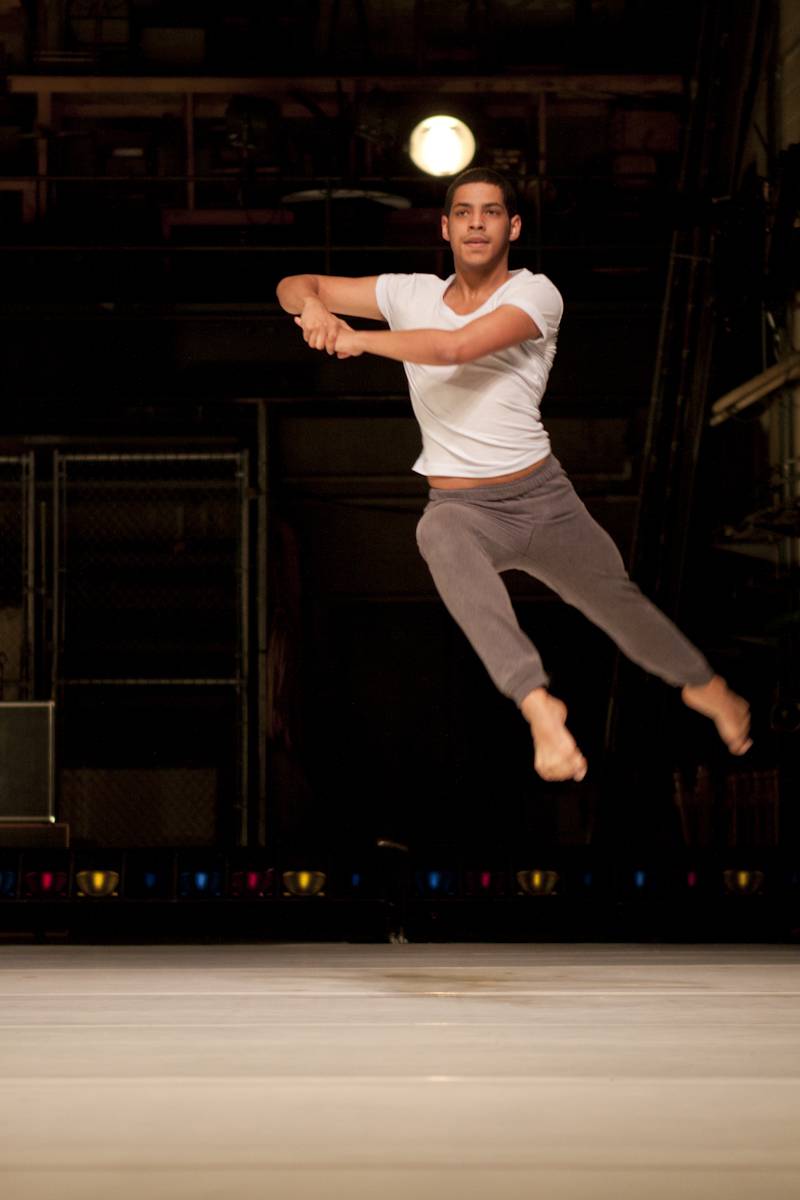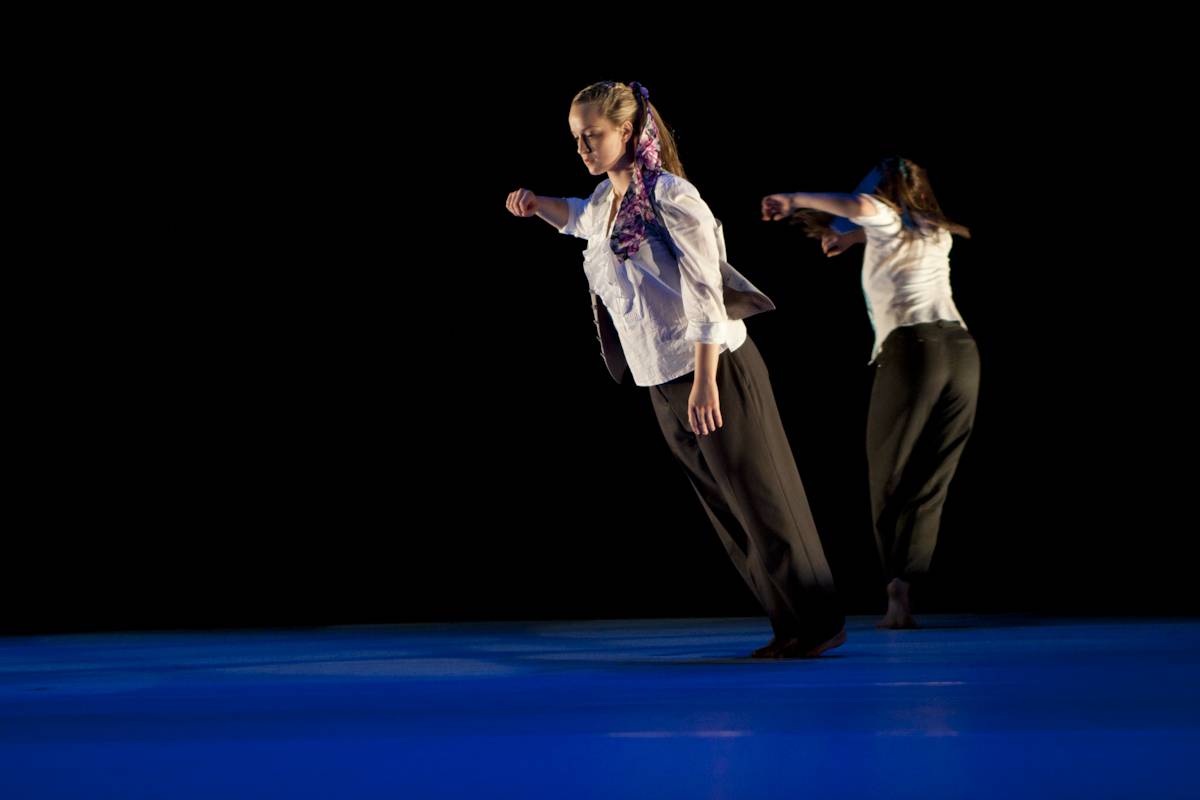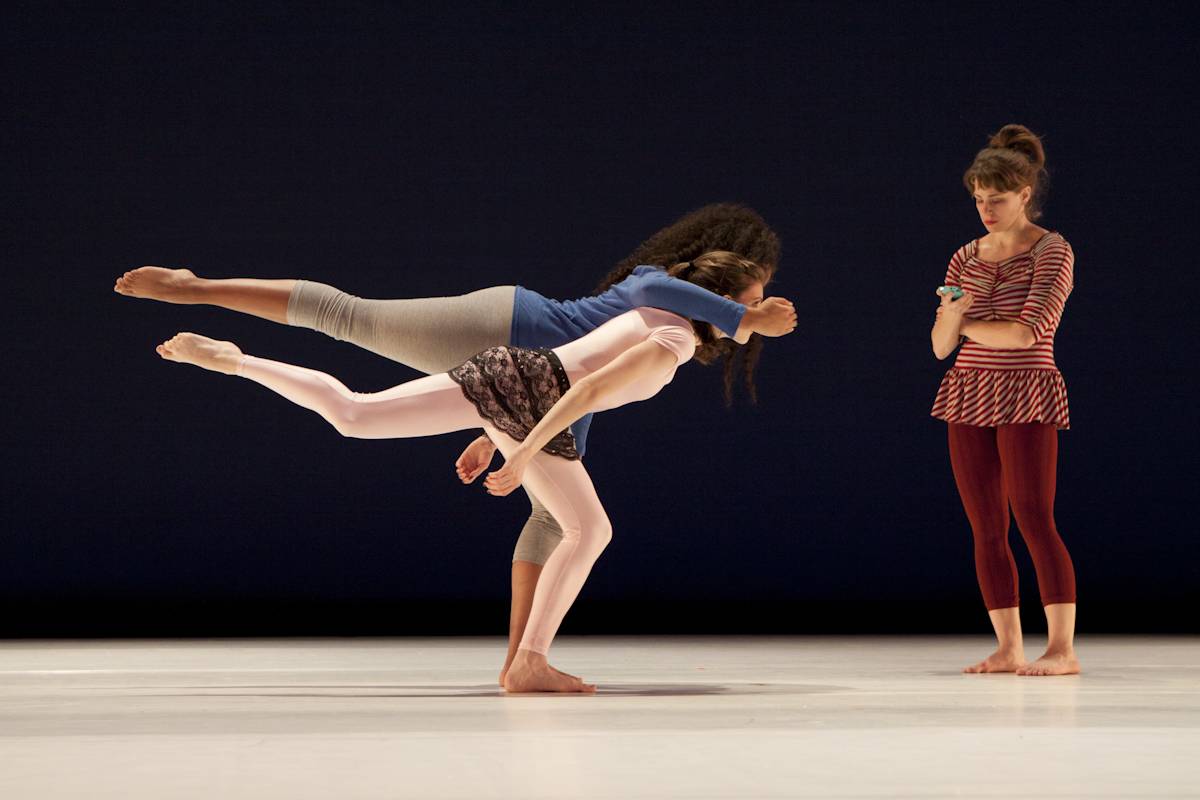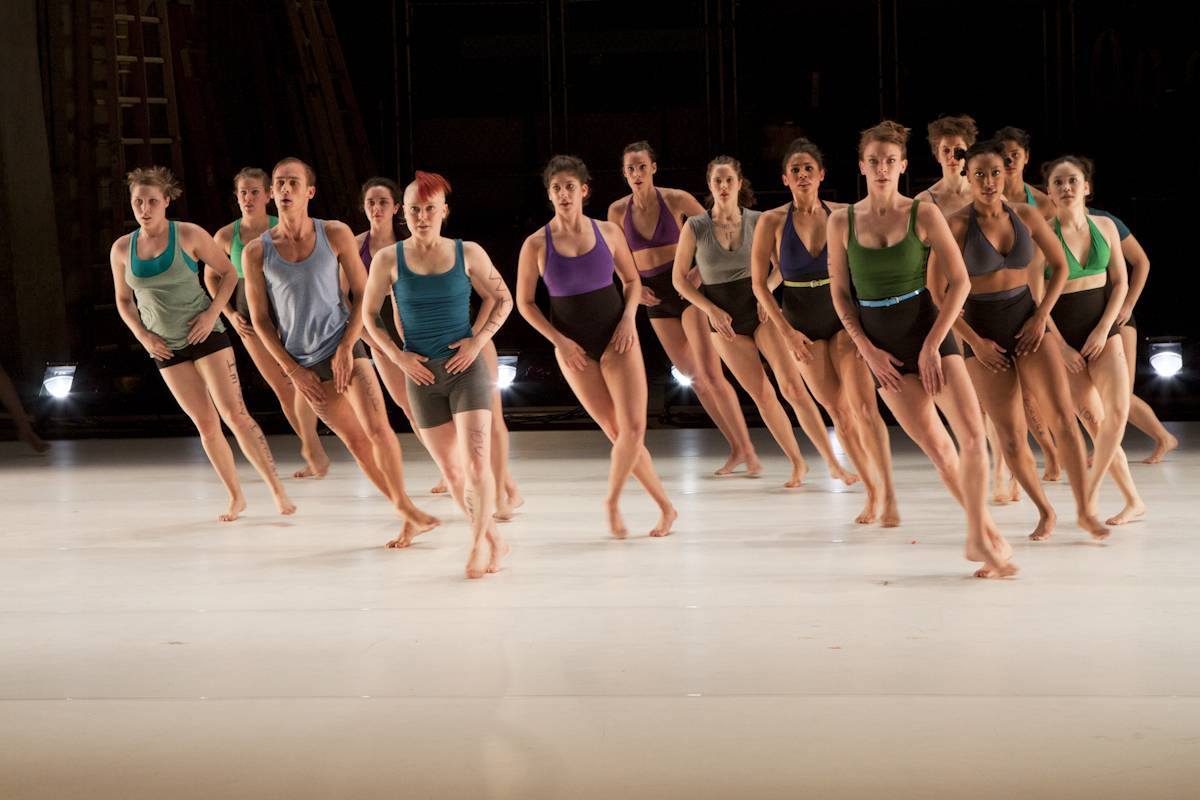 “February Dance” at Colwell Playhouse proved that choreography can either make or break a performance. In this case, the choreography broke the performance – in a good way.
“February Dance” at Colwell Playhouse proved that choreography can either make or break a performance. In this case, the choreography broke the performance – in a good way.
Several dances in the showcase were derived, or at least expanded, from other primary works. While sequels tend to be overshadowed by their original counterparts, this performance proved just the opposite.
In Jennifer Monson’s “there there,” dancers emulated movement from “Bird Brain: The Osprey Migration,” a navigational dance project produced by Monson in 2002.
Through a strong juxtaposition of staccato and fluid movement, “there there” investigated how bodies relate or shape to the spaces and systems around them. At one point, the dancers migrate offstage, in the middle of the dance, and force the audience to simultaneously experience this idea with them.
Rebecca Nettl-Fiol, a professor of dance at the University of Illinois, says each of her five sections in “Heart at Low Tide 2” had a slightly different creative process. Nettl-Fiol choreographed two separate ballroom sections, the first of which was a tango to the song, “Au Suivant,” by the Belgian musician Jacques Brel. The tango portion lends itself to sharpness, attack and somewhat aggressive movement.
The other sections of the piece combine a mixture of ballroom vocabulary and modern dance. Professional ballroom dancers Alex Tecza and Katja Lindolm, a husband and wife team from Chicago, and modern dancer Laura Chiaramonte joined Nettl-Fiol for the project.
“We worked with basic tango vocabulary that the dancers brought into the studio, and I shaped it in various ways,” Nettl-Fiol says. “In one part, I had them waltz over the tango music for a sense of more freedom, almost like going into a dream of some kind.”
The text of the music, Nettl-Fiol says, was used as underlying background material for the choreography. For example, one portion of the piece is about a young solider experiencing sex for the first time with a prostitute who yells, “Next!” or “Au Suivant,” each time that another patron comes along.

“That became an underlying dynamic,” Nettl-Fiol says.
Choreographers are, after all, experts at working body language and evoking emotion.
Linda Lehovec dedicated her work “Full Throttle,” the third piece performed, to one of her yoga students who is currently battling cancer.
Lehovec, the BFA program director at the University of Illinois, says she gathered her initial inspiration from a ballet class two years ago. During one exercise, she says, a dancer rocked another student’s head back and forth while the other dancers stood around watching. The beginning section of “Full Throttle” imitates a similar pose, which served as a powerful image throughout the dance.
From there, Lehovec asked her dancers to create phrases from a list of words that she distributed, which Lehovec eventually linked to physical steps.
“I would say about half of the material in the dance came from my body,” she says. “The other half came from the dancers, either manipulating my material or creating their own based on the parameters I gave them. It’s a nice blend of uniqueness and group energy.”
Dance, no matter the genre, brings a world of history, context and other art forms into the equation.

“UTF8,” constructed by Israeli choreographer Sahar Azimi, a guest lecturer with the dance department, was originally performed in 2010 by the Zagreb Dance Company.
Zak Jacobs, who studied with Azimi while abroad in Israel, says the choreography explores how different ‘codes’ can be used to organize and create structure. UTF-8, for example, is a computer program designed to decode information, translating it from one device to another. In this particular program, there is one language – or system – of communication.
Similarly, the 17 dancers in “UTF8,” originally performed with eight dancers, had to communicate with each other – and move – as a whole.
Annie Flaherty, a senior in the dance department, says the piece was designed to show technical skill and movement precision. The actual movement, she says, is removed from feeling and rather emotionally detached – much like a computer programming device.
In the initial version, a light board — behind the dancers onstage — serves as a cue for each new section, which has a specific, written out score.
“We re-created this in a way with the blinking border,” Jacobs says. “This was a study of the ‘codes’ of dance.’”
Dancer Alexandra Saveanu says “UTF8” was all about moving – and thinking – as a group. “We were able to put aside our differences and work together to create this unstoppable force onstage,” she says. “I really enjoyed the way Sahar pushed us to understand the musicality and specific rhythms he wanted. There was always something to work on in the piece, so it stayed very fresh for each performance.”
“Like this,” however, had a much less structured and definitive purpose.

“We talked as a cast about what ‘like this’ could mean or imply,” dancer Alison Rhoades says. “It’s something we wanted to make available to the audience without being entirely explicit.”
The piece, which has three alternate endings, borrows from the documentary, Ladies and Gentlemen Over 65, inspired by German choreographer Pina Bausch.
“You have to be open-minded and available to the experience,” Rhoades says. “There was the physicality of the movement, improvisation, spoken word and theatrics and chairs as performers. The piece was constantly evolving. We would walk into rehearsal one night and leave with an entirely new idea of what we were approaching.”
In the beginning, Rhoades says, there was a heavy focus on generating movement.
“We would go for an hour just dancing to music. From there, we would create specific sequences and phrases that we could manipulate and teach each other.”
Later on, the dancers delved into the theatrical elements of the piece.
“It seems so simple and straightforward, but it’s something you have to experience together as a cast to really understand,” Rhoades says.
The dance department’s next performance, StudioDance I, will take place in the Studio Theatre on March 8, 9 and 10 at 7 and 9 p.m.
photos by Natalie Fiol








